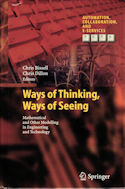• the role of language: the models developed for engineering design
have resulted in new ways of talking about technological systems
• communities of practice: related to the previous point,
particular engineering communities have particular ways of sharing and developing knowledge
• graphical (re)presentation: engineers have developed many ways of
reducing quite complex mathematical models to more simple representations
• reification: highly abstract mathematical models are turned into
‘objects’ that can be manipulated almost like components of a physical system
• machines: not only the currently ubiquitous digital computer,
but also older analogue devices – slide rules, physical models,
wind tunnels and other small-scale simulators, as well as
mechanical, electrical and electronic analogue computers
• mathematics and modelling as a bridging tool between disciplines
This book studies primarily modelling in technological practice. It is worth noting that models of the type considered in the book are not always highly valued in formal engineering education at university level, which often takes an “applied science” approach close to that of the natural sciences (something that can result in disaffection on the part of students). Yet in an informal context, such as laboratories, industrial placements, and so on, a very different situation obtains. A number of chapters consider such epistemological aspects, as well as the status of different types of models within the engineering education community.
The book will be of interest to practising engineers and technologists; sociologists of science and technology; and historians and philosophers of science and mathematics. It is written in a way that will also be accessible to non-specialists.
